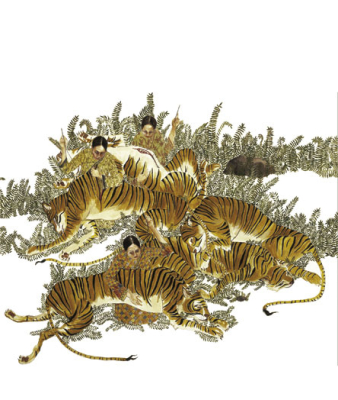In late 2008 I wrote Aimee Bender a fan letter. I had graduated from college in 2006, a year early than expected and, two years after that, was quickly losing touch with my literary ambitions with the surmounting fear of “I’m not good enough to do this.” Whenever I experience such bouts of desperation, I often reach for Bender’s early short story collections for inspiration, for ease. I’ll always be a fan.
That said, The Color Master, which is Bender’s fifth book, is a warm welcome back to what she does best: the short story. (Her last release, the novel The Particular Sadness of Lemon Cake, while still Bender-y, doesn’t quite hold up to the same oddball charms as Willful Creatures and The Girl in the Flammable Skirt.) Aimee Bender fans will recognize the familiarity of stepping into her bizarre universe in The Color Master, now also inhabited by newly-selected dreamt-up characters and situations. In fact, big fans will recognize some of these stories like old friends; many are culled and reprinted from various literary journals and anthologies. And readers just getting into Bender, well, they have a lot of wonderful things to look forward to.
Bender’s literary voice remains distinct as ever; her whimsical prose is stamped with her trademark blend of absurdist and magical realism, fiercely dark humor, and an element of the mythical. Contemporary fables with a sick twist. The first story “Appleless,” an exercise in flash fiction, could be a remixed version of Adam and Eve but quickly turns into a veiled tragedy that suggests rape and insatiable hunger. The internal narrative of an overly self-conscious and politically correct (she tries) teenage girl at a mall in “Lemonade” is so fluid, so naive, and so hilarious that the story might as well be a New Yorker “Shouts and Murmurs” piece. “Tiger Mending,” about the narrator’s sister who works as a tiger seamstress—as in, she sews stripes back onto tigers whose bodies keep splitting open—is a classic; that story was initially inspired by the Amy Cutler painting of the same name. The finale piece “The Devourings” is a new one—it could be an imagined Grimm’s version of Shrek: Trouble in Paradise—about a woman who must deal with her broken marriage when her alcoholic ogre husband accidentally eats their six children one evening in a drunken rage.
Common running themes of lust, relationships, and sex (a lot of sex) thread the collected pieces of The Color Master together. These tales have only gotten better with age, marinated over time. It’s been eight years since Bender’s last short story collection and for me, it’s evident I’ve also matured with her stories in this new collection, deeply relating to them on the human level.
The original fan letter I wrote Aimee Bender is too cheesed out for me to repost here, but I leave you with this snippet from her response, still safely tucked away in the “NICE” folder of my Gmail archive:
The world through my eyes on a daily level is fairly regular and ordinary, so the fiction helps me find access the other worlds lurking below.
Wishing you good surprises and illuminating strangenesses,
Aimee Bender

